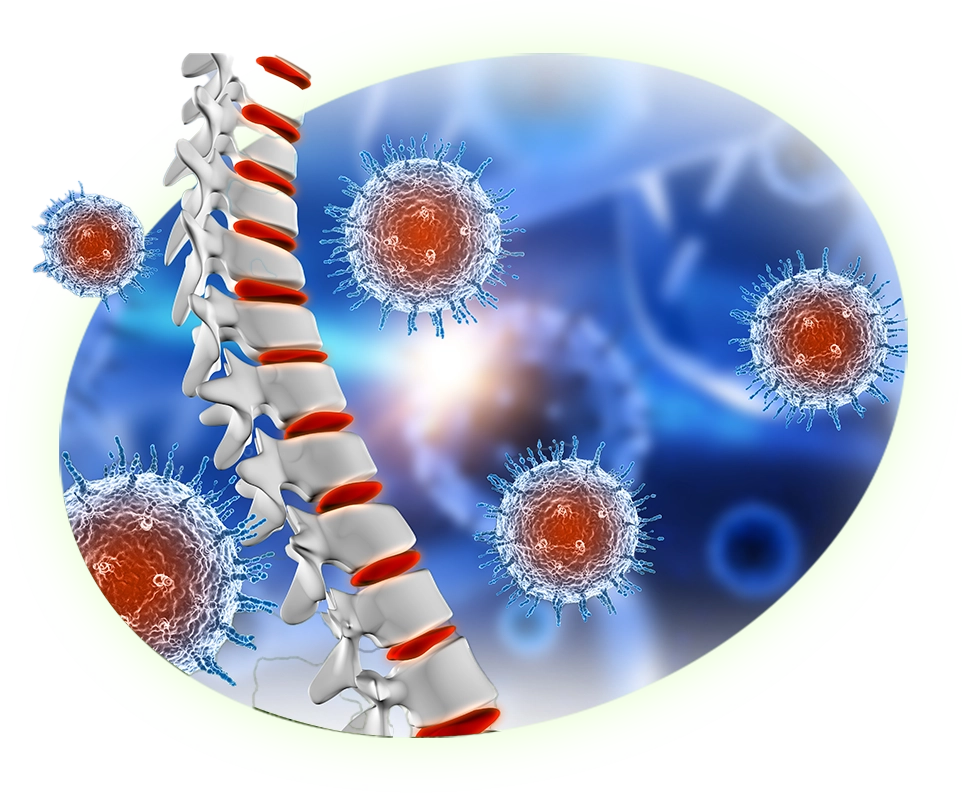Disc Regeneration
If you’re struggling with chronic back pain or disc degeneration, Total Spine Wellness offers a revolutionary approach. Our Stem Cell Disc Regeneration therapy combines endoscopic discectomy with stem cell therapy to promote healing at the source—reducing pain, restoring disc health, and preventing reherniation.

Stem cell disc regeneration is a cutting-edge treatment that uses your body’s own stromal vascular fraction (SVF) cells to promote natural healing of degenerated or herniated spinal discs. This non-traditional approach goes beyond pain relief by supporting the actual repair and regeneration of disc tissue.
Our clinic specializes in addressing stem cell disc degeneration, helping patients restore disc health using advanced cellular therapies.
Spinal discs can degenerate due to several factors, including:
As discs degenerate, they may shrink, herniate, or break down, leading to increased pressure on surrounding nerves and resulting in pain.
Traditional treatments, such as steroid injections or pain medications, often focus on masking symptoms rather than addressing the underlying issues. In contrast, stem cell disc regeneration offers a more holistic approach by:
At Total Spine Wellness, we combine minimally invasive surgical expertise with advanced cellular regeneration to deliver optimal outcomes.
This ultra-minimally invasive procedure removes the herniated portion of a spinal disc using a tiny camera and specialized tools. It relieves pressure on spinal nerves with minimal disruption to surrounding tissues.
For a more detailed look into the minimally invasive surgical technique we use, explore our Endoscopic Spine Surgery overview.
Once the discectomy is complete, we inject SVF stem cells into the treatment area. These cells promote anti-inflammatory effects, tissue repair, and hydration restoration within the disc.
To learn more about how stem cells work and the broader applications of this therapy, visit our Stem Cell Therapy for spine.
If you are seeking the latest advances in stem cell therapy disc regeneration, our procedures offer regenerative solutions designed to optimize spinal health.
Many patients consider disc regeneration therapy as a modern option that goes beyond traditional treatments for back pain and spine conditions.
This therapy is ideal for patients with:
Our spine specialists will evaluate your condition and determine if this treatment fits your needs.
You’ll receive custom aftercare instructions and follow-up to ensure optimal healing.
Stem cell disc regeneration has shown strong safety profiles in clinical research. At Total Spine Wellness, our protocols prioritize:
Pain relief and disc regeneration start here. Book your consultation with one of our specialists today and begin your journey to long-term spine wellness.
Discover how PRP therapy, BMAC therapy and Stem Cell therapy can transform spinal care. Explore the benefits, recovery process, and long-term advantages of this innovative treatment. Ready to learn more? Let’s dive in!
Here are some of the questions that we are asked most frequently at Total Spine and Wellness
Clinical studies and patient outcomes suggest that stem cell therapy for herniated discs can offer meaningful pain relief and functional improvement in 60–80% of patients, depending on the severity and the treatment protocol used. Results vary based on age, condition, and the type of stem cells applied.
On forums like Reddit, patients often share mixed but hopeful experiences, highlighting reduced pain, improved mobility, and minimal downtime. However, it’s important to rely on clinical data and consult with specialists for evidence-based treatment options.
In early-stage degeneration, discs may recover partially through exercise, hydration, posture correction, and anti-inflammatory nutrition. However, regenerative treatments like stem cell therapy provide a more effective path for significant repair in moderate to severe cases.
While stem cells may not completely “cure” degenerative disc disease, they can slow progression, reduce pain, and support regeneration of disc tissue. The goal is to restore hydration and functionality, often reducing or eliminating the need for surgery.
Total Spine Wellness offers cutting-edge stem cell therapy for degenerative disc disease right here in Florida. Our clinic combines regenerative medicine with minimally invasive spine procedures to maximize healing and recovery.
Yes, stem cell therapy is frequently used to treat L5-S1 herniations or degeneration, one of the most common sites of lower back pain. Targeted injections can reduce inflammation and encourage tissue regeneration at this critical location.
Yes, stem cell therapy is frequently used to treat L5-S1 herniations or degeneration, one of the most common sites of lower back pain. Targeted injections can reduce inflammation and encourage tissue regeneration at this critical location.
We are a team of highly specialized spine surgeons dedicated to pioneering the future of spine care.